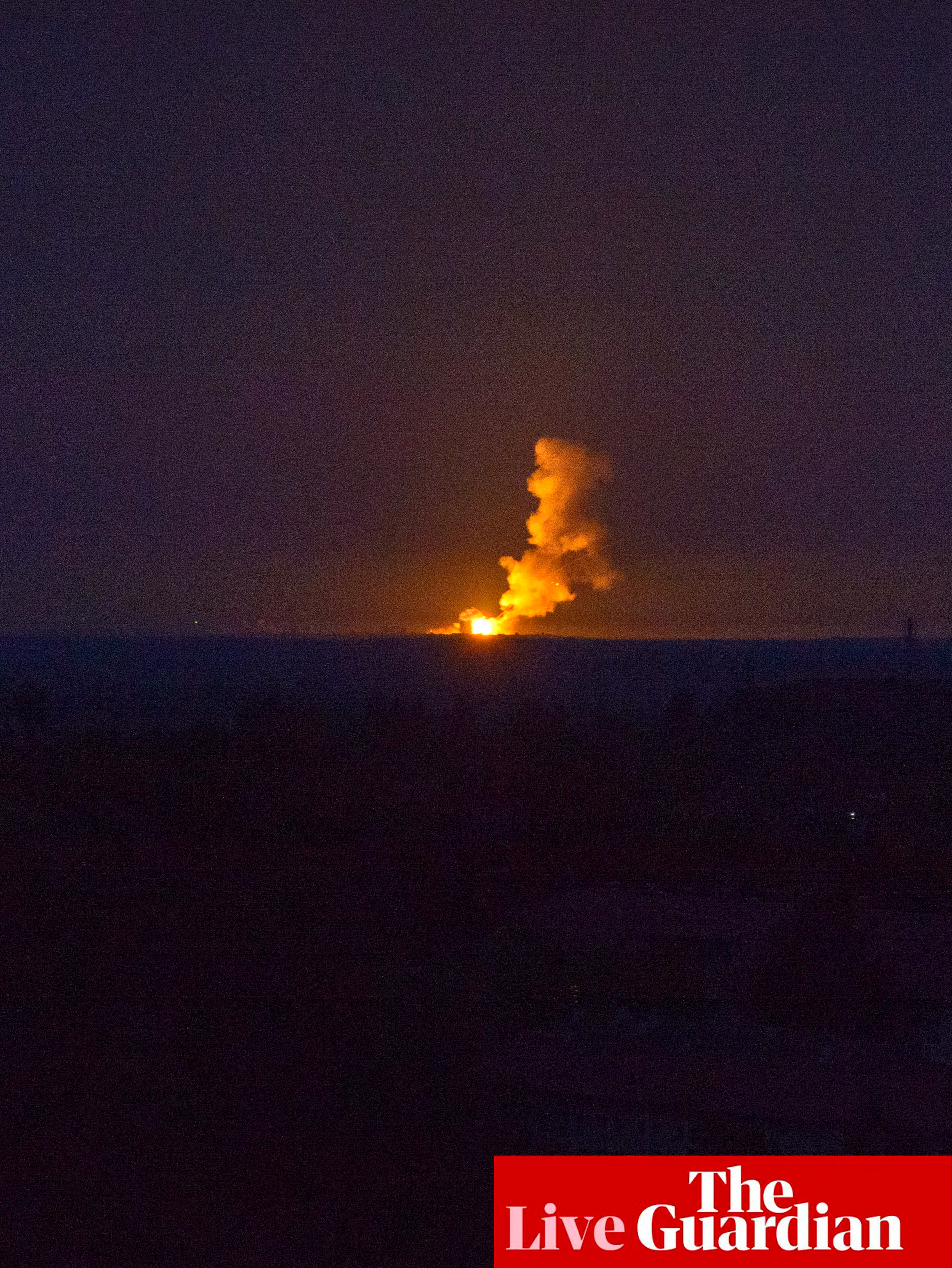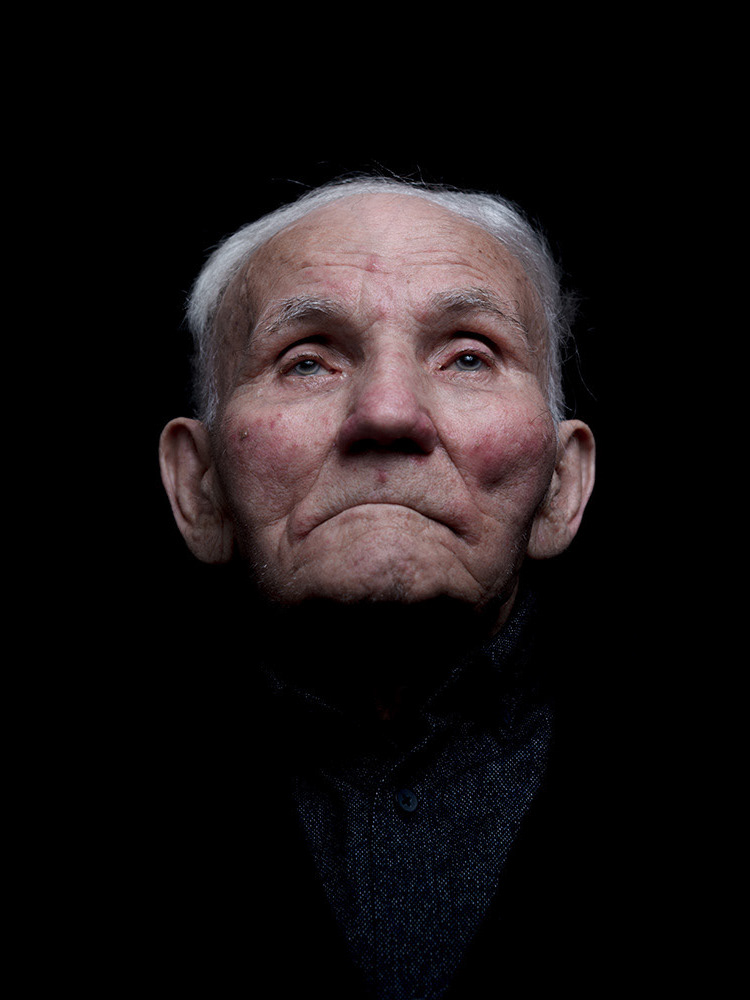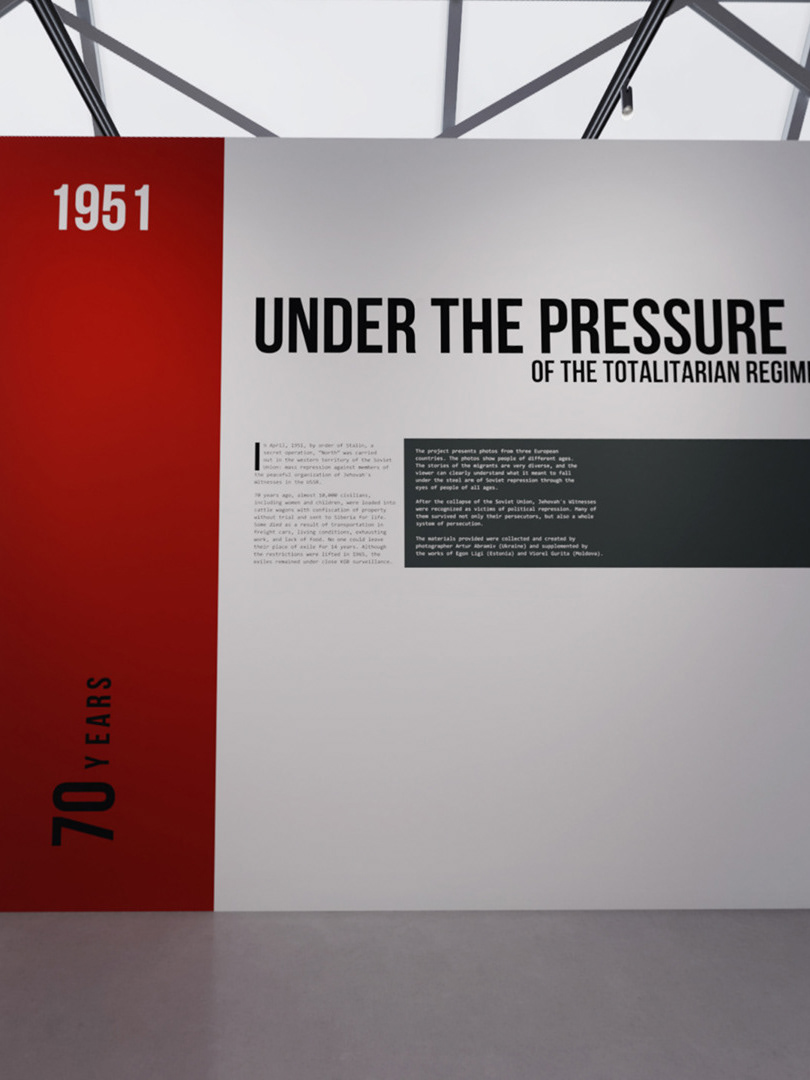“Even In Silence, I Heard Sirens”
A regular contributor to NGTI recounts the horrors of Russia’s invasion of his homeland that has left the country in ruins, whilst grasping the war’s ground reality in Lviv.
National Geographic Traveller March 10, 2022
National Geographic Traveller assigned me to cover the beginning of the war in Ukraine for the photo documentary story “Even in Silence, I Heard Sirens.” After the publication of the article, I continued to document the events and aftermath of the war in Ukraine as a contract photographer for Zuma Press and Getty Images for The Guardian, The Telegraph, Der Spiegel, Bild, DW, ORF, MSNBC News, Business Insider, Europa Press, DPA, Verdens Gang, Le Temps, Berliner Morgenpost, 20 Minuten, The Journal, La Stampa, and other media outlets.
The project highlights the impact of the war on the western territories of Ukraine. The Office of the UN High Commissioner for Human Rights (OHCHR) informs: "A significant number of civilian casualties have occurred far from the front lines, primarily due to long-range Russian missile strikes that reach even the most remote western regions of the country, causing unprecedented damage and destruction to civilian objects and infrastructure". More than 60% of all rocket hits hit civilian objects and infrastructure.
Civilians jump platforms at Lviv's central railway station in a bid to board an evacuation train. In the first months of the war, the city of Lviv became a transit point for refugees arriving at the Lviv railway station to continue their journey to Europe making the station the most densely populated place in the country. The Office of the United Nations High Commissioner for Refugees said the number of Ukrainian refugees across Europe was estimated at 5.932 million as of December 2023, and 6.335 million globally, as of November, there were 3.674 million internally displaced persons in Ukraine itself.
On the morning of February 24, 2022, Artur Abramiv woke up to the “surreal” news of Russia’s invasion of Ukraine. He and his wife spent the next few hours nervously flipping through news channels on the television of their apartment, located on the outskirts of Lviv in the western part of the country, where Abramiv was born and raised. Bombs were dropped and sirens went off like alarm bells. “Even when I managed to get some sleep that night, I felt like I hadn’t slept at all,” the 27-year-old photojournalist recounts the horrors of the incident as his insomnia spilled over the coming days. “Even in silence, I heard sirens.”
Each time the signals blared, the couple hid on cue in the safest corner of the apartment: a bathroom near the load-bearing walls. In the neighbouring house, residents of 40 apartments huddled together in a basement. Abramiv is careful not to disclose his precise whereabouts, lest he compromises safety of the people there. He had hoped for the situation to settle. Instead, the events that ensued were no short of a nightmare.
A fireball rises to a height of 200m after a massive Russian missile attack targeted a Ukrainian gas storage facility, the third largest in the world, with "Kinzhal" missiles on the morning of March 24, 2024. Experts report that this day marked the beginning of a new tactic aimed at destroying the ability of Ukraine and the other 27 countries to use these storage facilities.
A woman scans news reports on her phone while hiding in the bathroom of her home during the air-raid siren. She has a helmet on her head to protect her head in case the house collapsed due to a missile strike.
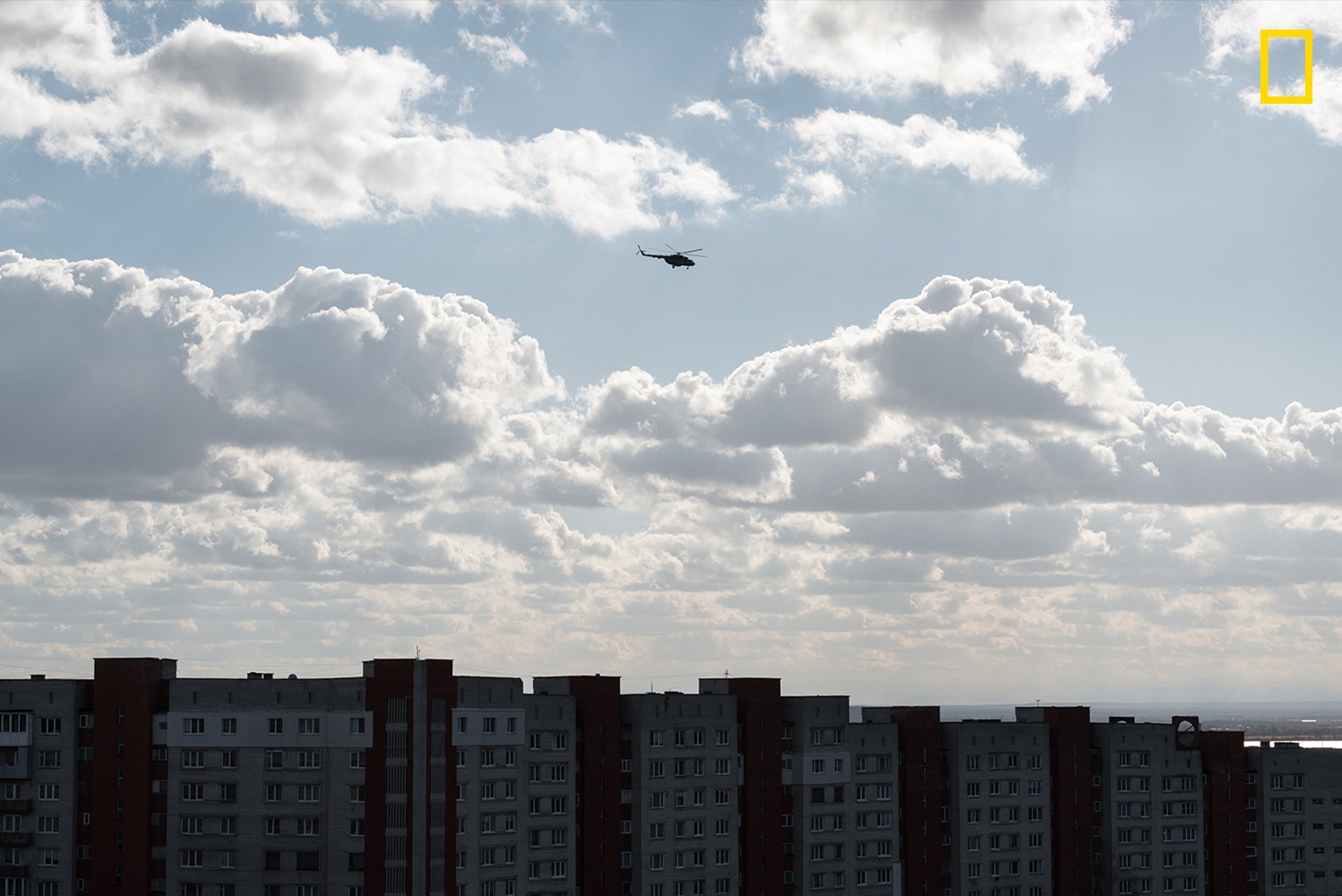
A military combat transport combat helicopter belonging to the Armed Forces of Ukraine whines over the city.
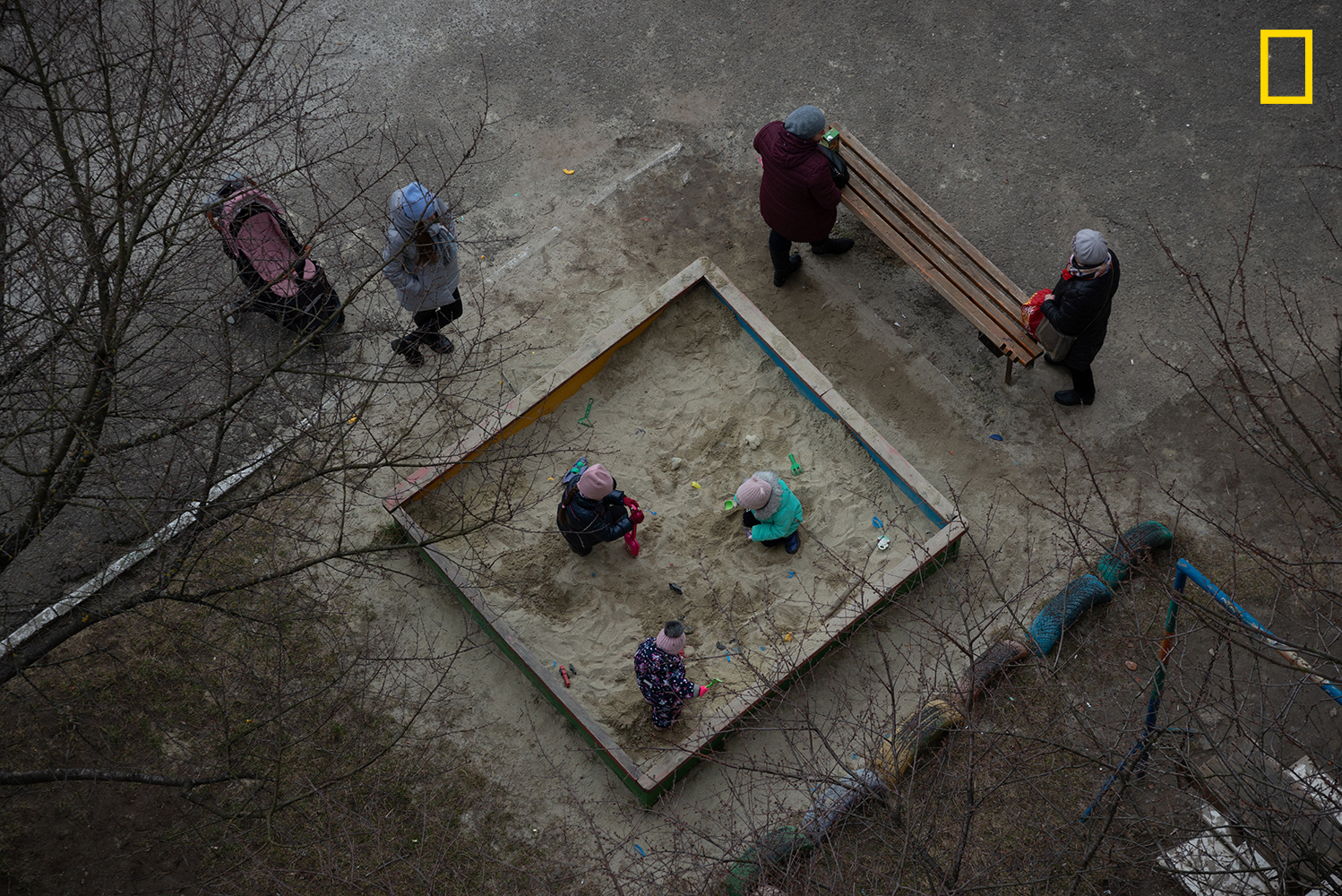
Children in the small town of Lviv region, in the west of the country, play in the sandbox next to their parents during a brief break between rocket alarms on the sixth day of the war. March was the deadliest month of the war for Ukrainian civilians, the Office of the UN High Commissioner for Human Rights (OHCHR) recorded 4,196 civilian deaths and 3,010 civilian injuries, with the real number believed to be much higher, especially in March due to difficulties in verifying the data.
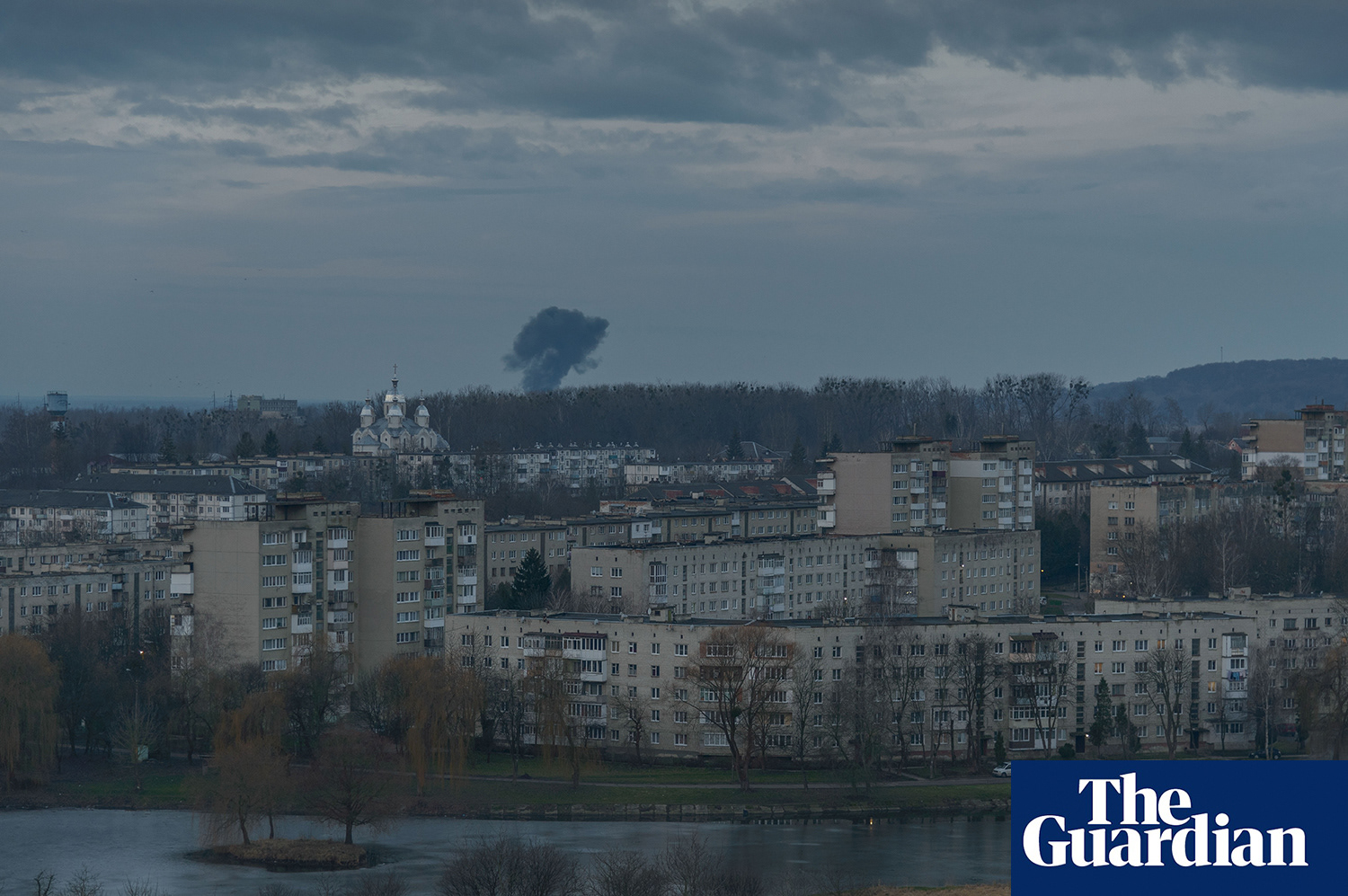
Smoke rises from the impact of a missile that struck a residential area in western Ukraine during a massive missile attack on the morning of December 29, 2023. Russia launched 110 missiles at Ukraine.
The nation quickly turned into a battle ground, reviving memories of World War II. Houses were razed to the ground in hotspot zones. Fierce fighting broke out between Russian and Ukrainian troops on the streets of Gostomel, a town in Kyiv Oblast, north-western suburb to the capital city of Kyiv. Russian soldiers occupied and shelled private homes, unaware of panic-struck families who took cover in basements, praying they dare not be found. March was the deadliest month of the war for Ukrainian civilians, the Office of the UN High Commissioner for Human Rights (OHCHR) recorded 4,196 civilian deaths and 3,010 civilian injuries, with the real number believed to be much higher, especially in March due to difficulties in verifying the data.
From 24 February 2022 to 4 December 2023 the Office of the UN High Commissioner for Human Rights recorded more than 28,700 civilian casualties with more than 10,000 civilian deaths, including 569 children, with actual figures believed to be much higher. A significant number of civilian casualties occurred far behind the frontlines, mainly due to long-range Russian missile strikes, causing unprecedented levels of damage and destruction to civilian facilities and infrastructure. As of December 2023, more than 7,500 Russian Rockets of various types were fired throughout the country during the entire war. According to the latest estimates of the regional military administrations, the total number of destroyed or damaged housing facilities is about 167.2 thousand buildings, with a total area of 88.9 million square meters, which is 8.6% of the total area of the housing stock of Ukraine.
The destroyed apartments of the Lviv residential apartment block, where the woman's body was found after a direct hit by a Russian cruise missile "Kalibr" on the night of July 6. As a result of the rocket strike, 10 people died and 42 were injured, including 3 children. This is the deadliest strike on the civilians of Lviv, a city far from the frontline.
The destroyed apartments of the Lviv residential apartment block, where the bodies of two women were found after a direct hit by a Russian cruise missile "Kalibr". On July 6, UNESCO condemns the bombing that hit a historic building in L’viv last night, located in the buffer zone of the World Heritage Site of "L'viv – the Ensemble of the Historic Centre". This attack, the first to take place in an area protected by the World Heritage Convention since the outbreak of the war on 24 February 2022, is a violation of this Convention as well as of the 1954 Hague Convention for the Protection of Cultural Property in the Event of Armed Conflict.
A downed Russian rocket falls over a part of the city in the area where five primary and general secondary education institutions are located. During a massive missile attack on Ukraine on the morning of February 7, 2024, Russia launched 64 air attack weapons on Ukraine.
Two simultaneous explosions are visible in the distance from a massive Russian missile attack on Ukrainian infrastructure. Barrage targeted energy sites across the country injuring civilians. According to the Ukrainian air force, Russia used 53 missiles and cruise missiles, as well as 47 drones. Russia's constant attacks on Ukraine lead to frequent power cuts.
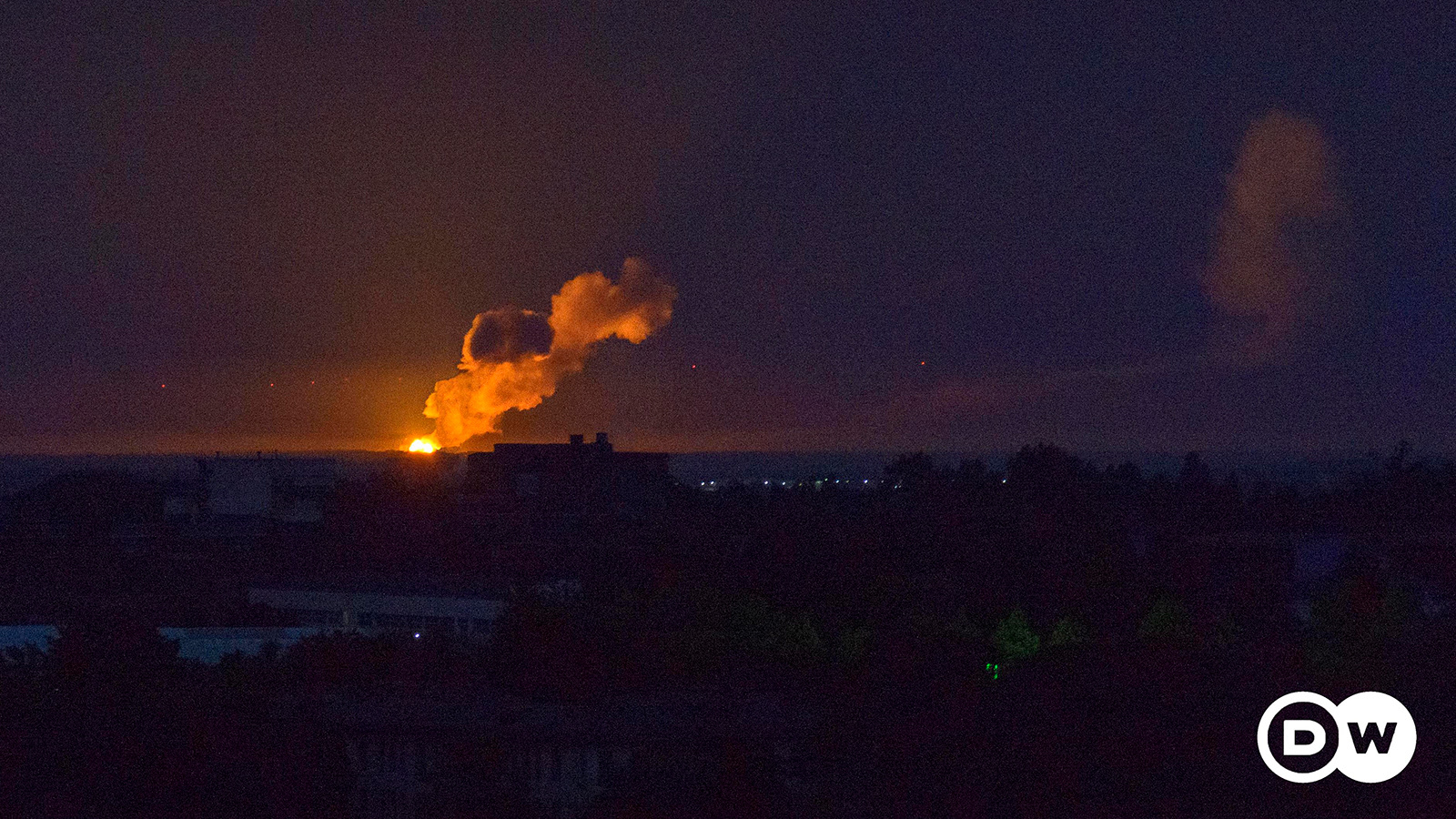

A fireball from the missile formed over the city in the western part of the country during a massive missile strike on June 1, 2024.
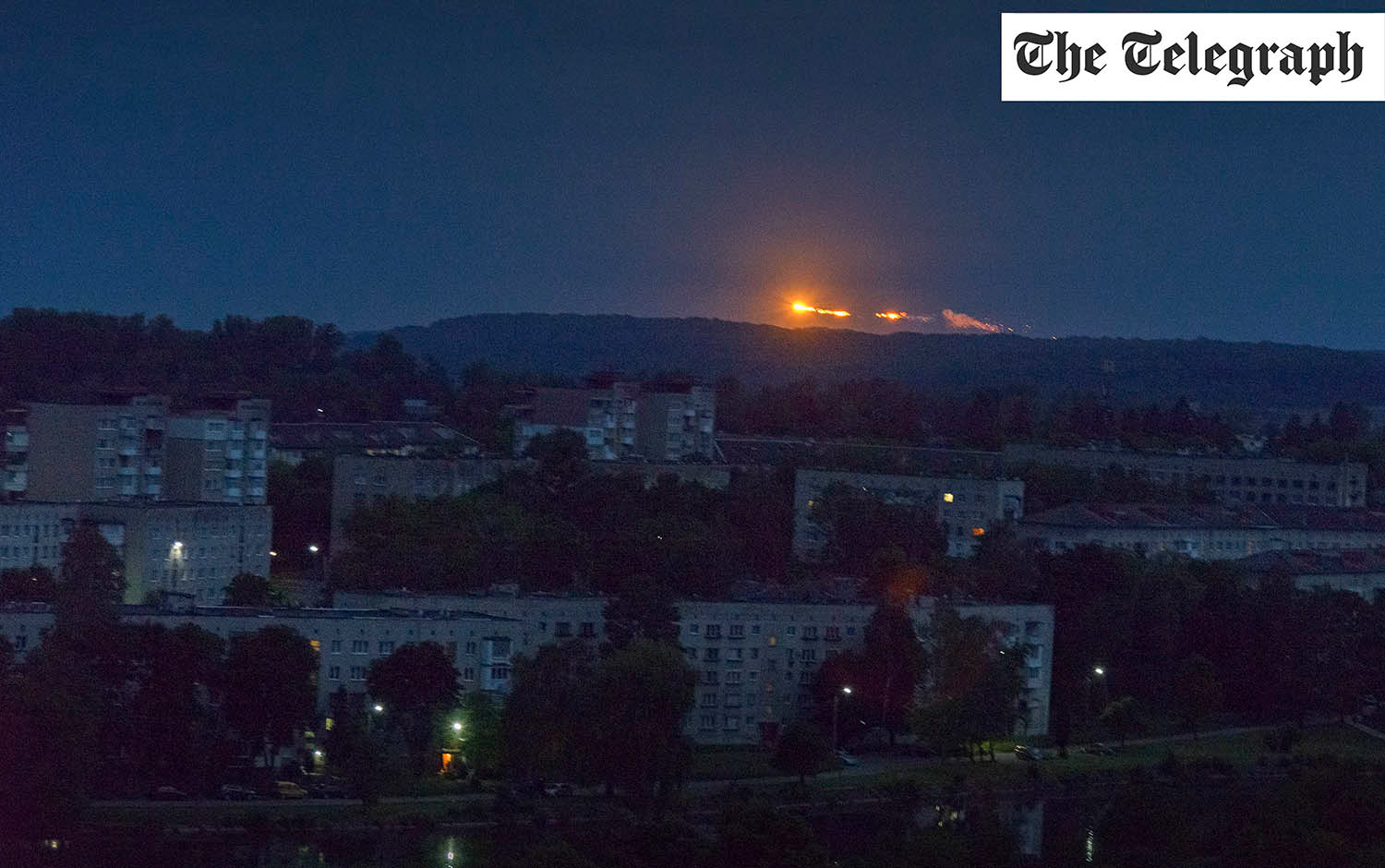
A rocket falls over the city during a massive missile attack on Ukraine on the morning of June 1, 2024.
Lviv’s central railway station, a 1904-built Art Nouveau edifice, doubled as a shelter site for civilians. Each day, hundreds of thousands, especially from bombed-out cities in the east, flocked to the platforms, with their lives packed in suitcases, hoping to hop aboard a Poland-bound train.
“The place we’re going to will have more toys and new cartoons,” Abramiv, who set out to document the ground reality on an assignment for National Geographic Traveller India, overheard parents comforting their children amidst tearful goodbyes to their homeland. As of February 24, 9 p.m., President Volodymyr Zelensky has decreed male citizens, aged 18-60, to stay behind and fight for the country. The decision to flee was a last resort for many and it came at the cost of leaving behind loved ones. But it seemed like their best shot at staying alive.

In the first months of the war, the city of Lviv became a transit point for refugees arriving at the Lviv railway station to continue their journey to Europe or the safest region of Ukraine - Transcarpathia, making the station the most densely populated place in the country.

Police monitor the exodus of those fleeing to Poland by evacuation train. Women with children from different parts of Ukraine hold the line during the day in the underground crossing of Lviv railway station, which serves as a shelter during air alarms. People stay hungry for fear of losing out on their turn.

The girl turns to the temporarily installed barrels with fire for warmth.
Women who were unable to secure a seat on trains, which is made free for all since the commencement of the war, crossed borders with their children however best they could: via their own vehicles and even on foot. Buses with civilians lined the border for as long as three days. Volunteers set up temporary kitchens to serve warm food and drinks to refugees crossing over. Unfortunately, people went hungry for the fear of losing out on their turn. Some even abandoned their suitcases and cars.
Western Ukraine became a green corridor for those in exile. Queues stretched beyond 10 kilometres on the border with the EU. The UN has thus far reported two million refugees that have left Ukraine to seek asylums in neighbouring nations. The exodus is alarming. Amidst escalating tensions, Omicron continued to surge too. Some were forced to evacuate regions even before they had the chance to recover.
Lviv’s central railway station doubled as a shelter site for civilians. Each day, hundreds of thousands, especially from bombed-out cities in the east, flocked to the platforms, with their lives packed in suitcases, hoping to hop aboard a Poland-bound train. People are left with no choice but to put up at the station before being evacuated. They turn to the temporarily installed barrels with fire for warmth.
***
“It’s like my childhood during the war,” a 91-year-old Alzheimer’s patient grappled with the destruction of Kyiv, her native city, shortly after regaining consciousness. The parallel is not a hyperbole. A night curfew is imposed after 10 p.m. and lights inside homes are required by law to be turned out. Darkness prevails in every alley. “People have learnt to differentiate between the sounds of rockets, projectiles and bombs,” mentions Abramiv. Russian troops have laid the groundwork for a hunger blockade in major cities. Basic provisions of food, water, gas, electricity and heating have been choked. A six-year-old child is reported to have died of dehydration in the south-eastern city of Mariupol. Residential neighbourhoods, hospitals and educational institutions are being shelled. Supplies are stocked up by the general population and shelves at shops in cities not yet affected by the bombing are rapidly emptying. Stores have implemented restrictions on products, permitting people to buy only three packs of pasta, for instance. Most pharmacies have shuttered, while those that continue to operate have run out of medicines.
The living room of the first floor of the Lviv multi-story residential apartment complex destroyed after a direct hit by a Russian cruise missile "Kalibr".

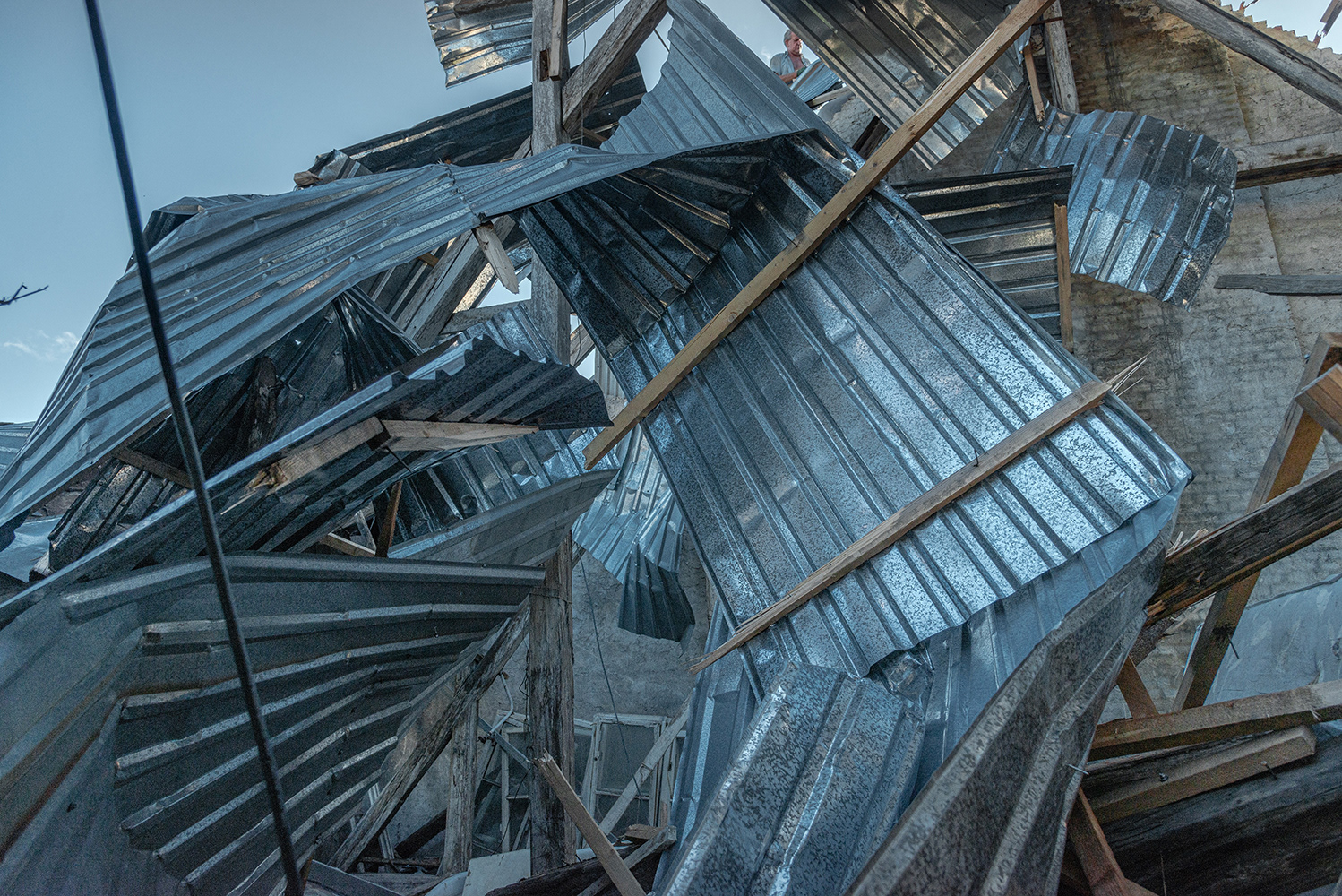
A resident dismantles the roof of a Lviv block of flats destroyed by an explosive wave after being hit by a Russian missile.
On March 4, Russian forces captured Zaporizhzhia nuclear power plant, the largest of its kind in Europe, according to regional officials. The NPP, stationed at Enerhodar on the banks of the Kakhovka reservoir on the Dnieper river, is believed to produce one-fifth of Ukraine’s electricity and almost half the energy generated by the country’s nuclear power facilities.
More than 400 kilometres away in Kharkiv, people taking cover in basements were tossed by the shock waves. The bombing was so strong that individuals were thrown off their seats like on a trampoline. Temperatures soared sharply due to a fire that broke out at the Kharkiv Tank Factory. Eyewitnesses say that one can only step out in a short-sleeved shirt незважаючи на температуру поітря нижче нуля. There is also a looming threat of direct terrorist attacks by saboteurs. Backpacks with explosives have already been found in Kyiv. As a result, Ukrainian officials have tightened security measures and stringent checking of documents is enforced throughout the country.
Displacement has left thousands homeless, jobless and vulnerable. In such times of crisis, volunteers have come forward to help refugees find housing and provide them with psychological support. But every day comes with its share of instability.
Displacement has left thousands homeless, jobless and vulnerable. In such times of crisis, volunteers have come forward to help refugees find housing and provide them with psychological support. But every day comes with its share of instability.
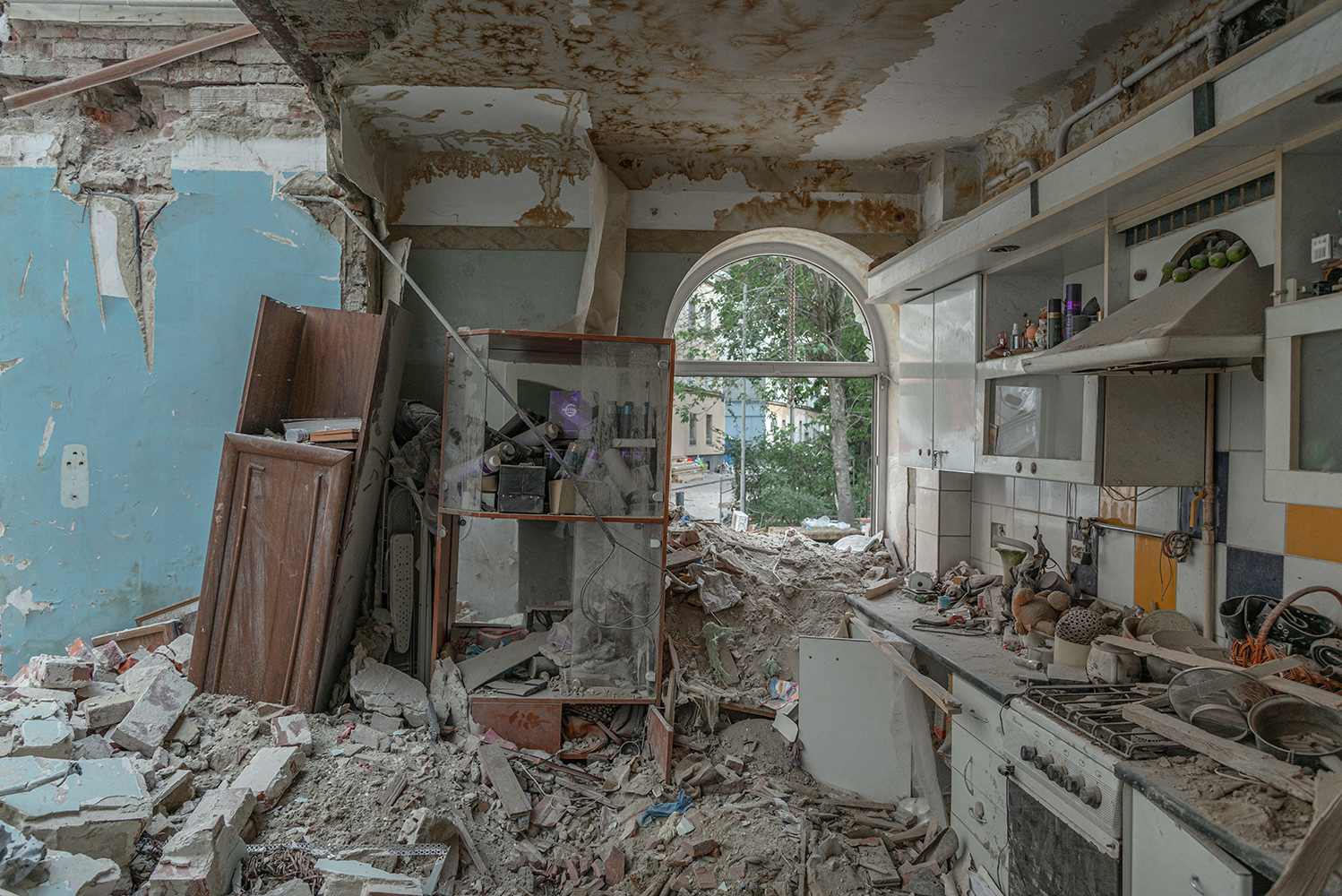

***
On October 10, 2022, Russia initiated a massive strike campaign aiming to plunge Ukraine into a blackout. Russian forces systematically targeted key energy infrastructure objects with successive waves of rocket attacks.The Russian military planned to disrupt Ukraine's power system by destroying key transformer substations, breaking them into isolated islands, and hindering the flow of electrical energy. On November 23, as a result of 5 massive missile attacks, the energy system of Ukraine suffered a system accident for the first time in history - a blackout occurred. The system lost its integrity and broke into isolated "islands." This led to the emergency shutdown of all nuclear reactors in the country. In February 2023, these strikes finally lost their effectiveness, ceasing to create a power deficit in the power system. As of March 21, 2023, due to 18 rocket strikes on energy infrastructure objects, at least 141 civilians lost their lives, and approximately 400 people were injured.
The smoke rises from the hit energetic infrastructure of two missile strikes in the region on the West. The consequence of such shelling was the disconnection of cities from electricity, water, and mobile communications на кілька діб.
A resident of the city of Novyi Rozdil walks his dog during a rocket attack on the city's power station located nearby on October 10.
A man illuminated his room with flashlights during an emergency blackout. July, 2024, Ukrenergo, Ukraine's national energy company, has introduced schedules of hourly power outages throughout Ukraine on 16 May for household and industrial consumers for 15 hours.
Residents of the residential district of the city in the west of the country illuminate their way with flashlights on the evening of November 21 during an emergency blackout. Such outages could last up to 15 hours per day.
A fireball rises to a height of 300 meters after a Russian missile hit the gas infrastructure in western Ukraine.
The moment of impact on Ukraine's civilian infrastructure during massive Russian missile attack on May 8, 2024. The object that glows in the sky to the right is the approach of the next rocket.
Since February 24, when general mobilization was announced and borders were closed to men aged 18-60, over 14,000 men managed to escape to avoid mobilization by illegally crossing the border on foot: over mountains, through forests, or swimming across rivers to nearby countries where they seek asylum. According to unofficial Ukrainian data, during such escapes to Romania, 90 men lost their lives – either drowned while crossing the Tisza River or froze to death in the mountains. Ukraine’s borders with Moldova and Romania have been the most popular for people to attempt illegal crossings. More than 30,000 Ukrainian men have illegally crossed into both countries since the start of Russia’s invasion.
The country's highest peak, Hoverla, remains the most desirable destination for visit even during the war. Currently, the Carpathians are one of the calmest regions in the country, experiencing the least rocket attacks in the two years of the war.
Since February 24, when general mobilization was announced and borders were closed to men aged 18-60, over 14,000 men managed to escape to avoid mobilization by illegally crossing the border on foot: over mountains, through forests, or swimming across rivers to nearby countries where they seek asylum. According to unofficial Ukrainian data, during such escapes to Romania, 90 men lost their lives – either drowned while crossing the Tisza River or froze to death in the mountains. As stated by Ukrainian authorities, more than 21,000 men were detained while attempting to illegally cross the border.
Since February 24, when general mobilization was announced and borders were closed to men aged 18-60, over 14,000 men managed to escape to avoid mobilization by illegally crossing the border on foot: over mountains, through forests, or swimming across rivers to nearby countries where they seek asylum. According to unofficial Ukrainian data, during such escapes to Romania, 90 men lost their lives – either drowned while crossing the Tisza River or froze to death in the mountains. As stated by Ukrainian authorities, more than 21,000 men were detained while attempting to illegally cross the border.
Tourism in Ukraine is currently going through very difficult times. Ukrainian infrastructure and nature are constantly suffering from russian attacks. Many unique natural and recreational sites, such as Askania Nova or the Kinburn Spit, were completely destroyed during the fighting or are currently under occupation. The flow of foreign citizens has significantly decreased.
UNESCO counts 341 cultural sites damaged in Ukraine after two years of war. Based on satellite images, the UN agency estimates the damage in the sector at €3.3 billion. Ukraine has become a real-time testing ground for the rescue of cultural heritage. "For the first time, we're intervening during an active war rather than after the conflict," noted Krista Pikkat, UNESCO's Director of Culture and Emergencies.

Locals in the culturally rich city of Lviv have taken it upon themselves to shield several stone statues by wrapping them in protective sheets.

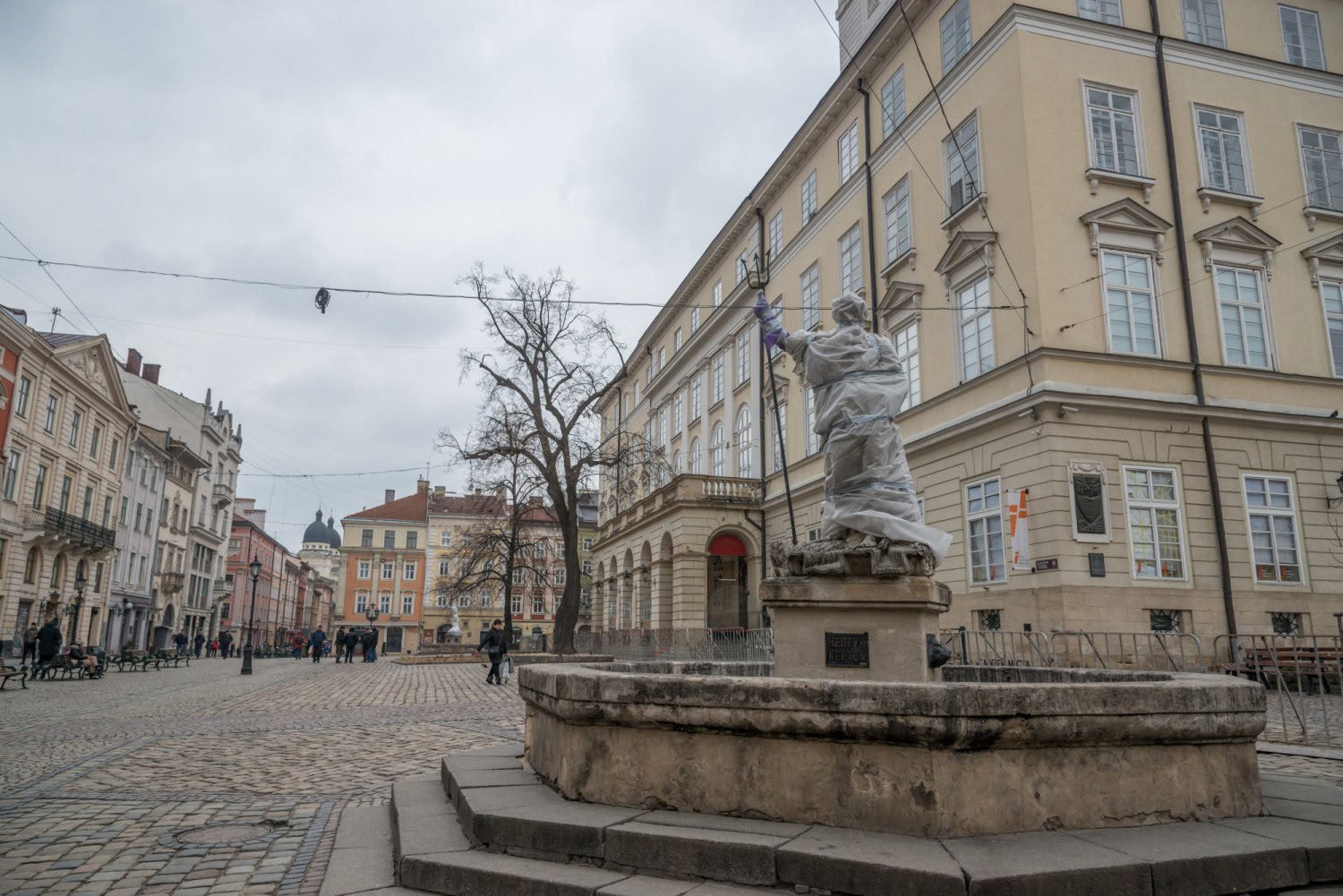
As of December 20, 2023, UNESCO has confirmed damage to 334 objects of historical, religious, and artistic significance due to the hostilities in Ukraine. Currently, no UNESCO World Heritage site in Ukraine appears to have been damaged.

A guide conducts a tour in the old part of the city, which is included in the UNESCO World Heritage Site, for a group of tourists - internally displaced persons, mainly from the central and eastern regions of the country. The local authorities of the city of Lviv have taken measures to preserve cultural heritage.
A girl holding her father's hand looks at the barrel of a Russian tank destroyed in the early months of the war in the north of the country, displayed in Lviv at a traveling exhibition of destroyed Russian equipment.
As of May 13, 2024, the Office of the UN High Commissioner for Human Rights reports at least 1,993 child casualties. According to the latest official data, 13 children have suffered from sexual violence, 2,278 are missing, and 19,546 have been deported or forcibly displaced by the Russian authorities.
As of May 13, 2024, the Office of the UN High Commissioner for Human Rights reports at least 1,993 child casualties. According to the latest official data, 13 children have suffered from sexual violence, 2,278 are missing, and 19,546 have been deported or forcibly displaced by the Russian authorities.
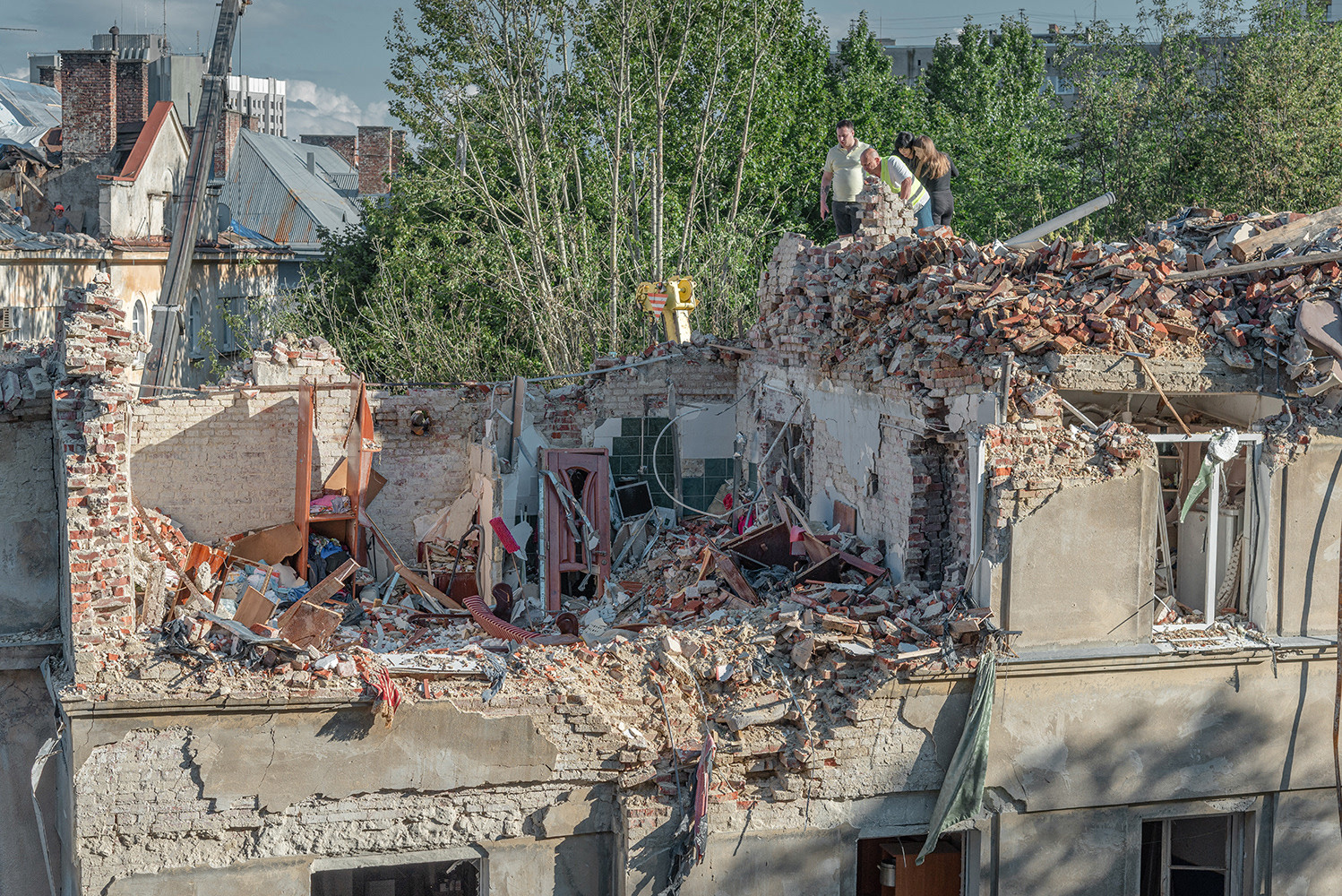
A grieving family surveys the wreckage of their apartment with a demolition service worker after a direct hit by a Russian missile on their apartment in Lviv on July 6. As a result of the missile strike, 10 people were killed and 42 others, including 3 children, were injured. This is the deadliest blow to the civilian population of the city.
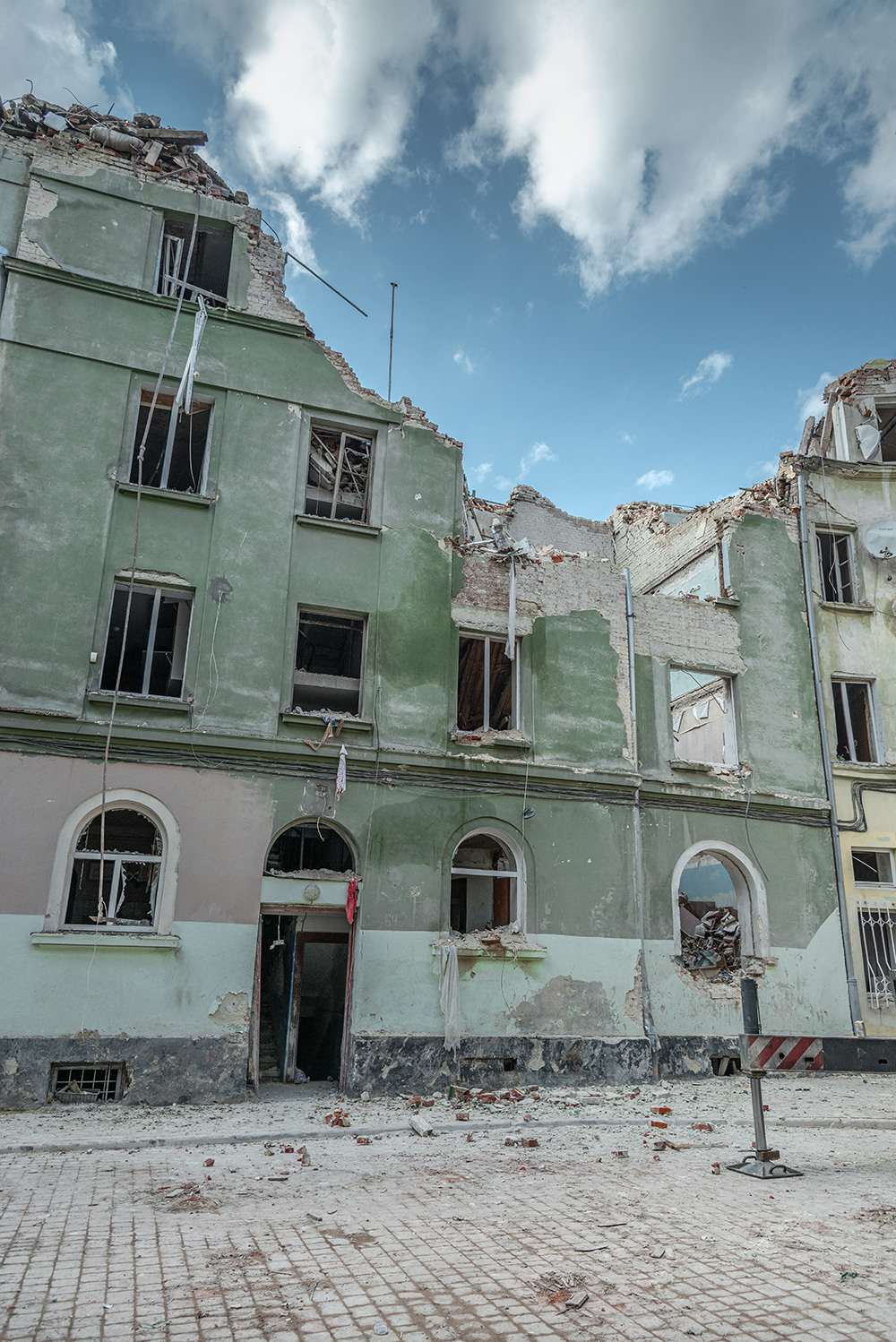
The exterior of the destroyed building in Lviv aftermath of a Russian missile. Missiles hit a four-story apartment building, destroying part of the upper floors. According to the Office of the UN High Commissioner for Human Rights, as of December 2023, 24 people were killed, and 94 have been injured as a result of missile strikes on civilian objects.
Russia keeps raining down rockets and drones on Ukraine's cities. Yet not all residents have access to air raid shelters. Members of the public take cover in an air raid shelter in the undergrounds of Lviv, which also serve as a museum, following a siren warning in the city center.
A shot car from the East of Ukraine. Russian forces fire on evacuation convoys because of which many civilians died halfway to the rescue.
A family with three children climbs a staircase from the underground to a railway platform to board an evacuation train to Poland. A volunteer helps a family transfer a pram with a child. Under martial law, Ukrainian men aged between 18 and 60, with some exceptions, are not allowed to leave the country as they may be called up for military service. But men with more than three minor children have the legal right to leave Ukraine. In this way, father avoids divorcing with the family.
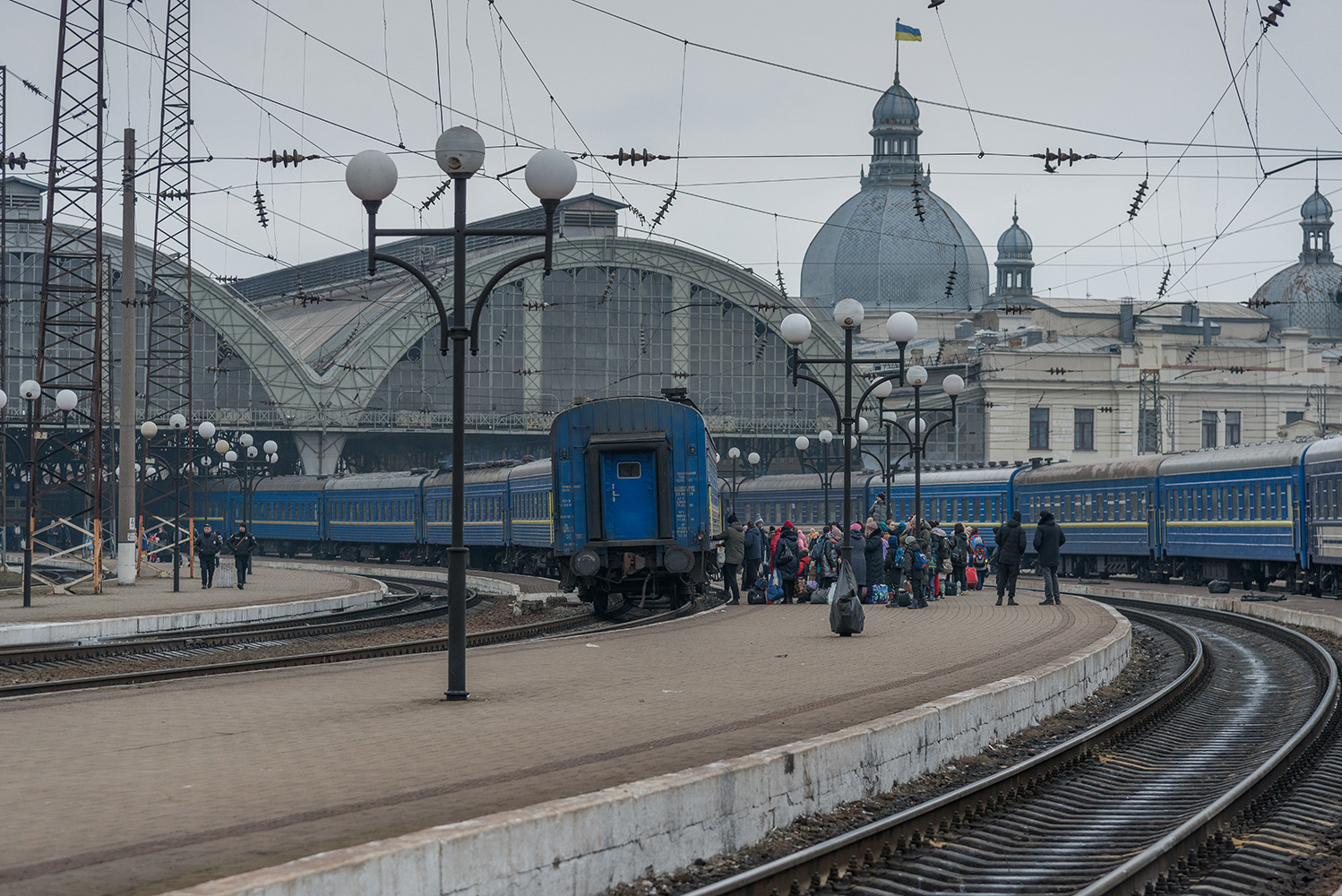
Trains have been made free of cost for citizens since the commencement of the war. However, only women, children and the elderly are allowed to leave the country.
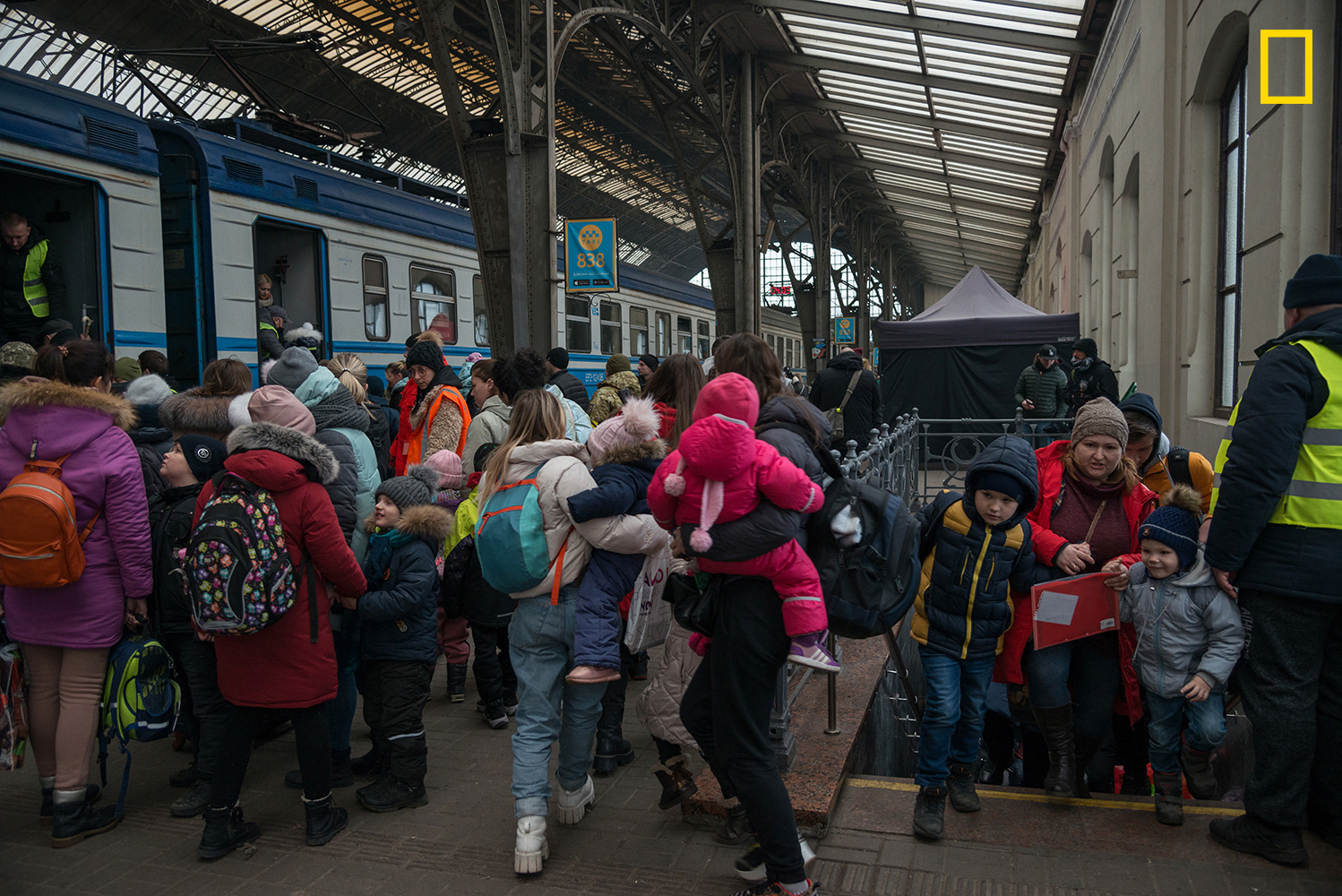
Trains have been made free of cost for citizens since the commencement of the war. However, only women, children and the elderly are allowed to leave the country.
A little girl is shining her gaze through an evacuation train window, waving to a man standing on the platform.
From February 24 women in Ukraine were faced with the dramatic choice: fleeing to Europe without their husbands or staying together in a war-torn country. Two feelings are fighting: ensuring security for their children and desire to be with a loved one who can no longer leave the country. Such goodbyes have been repeated across Ukraine since Russia invaded and began pounding the country`s cities with bombs.
From February 24 women in Ukraine were faced with the dramatic choice: fleeing to Europe without their husbands or staying together in a war-torn country. Two feelings are fighting: ensuring security for their children and desire to be with a loved one who can no longer leave the country. Such goodbyes have been repeated across Ukraine since Russia invaded and began pounding the country`s cities with bombs.


